Wolfram Function Repository
Instant-use add-on functions for the Wolfram Language
Function Repository Resource:
Return a substitution tiling
ResourceFunction["AlgebraicSubstitutionTiling"][tiling,steps] with the given tiling system specified by tiling, return the state after steps substitutions. |
Show a starting kite after two substitution steps with the Penrose kites and darts tiling system:
| In[1]:= |
| Out[1]= | 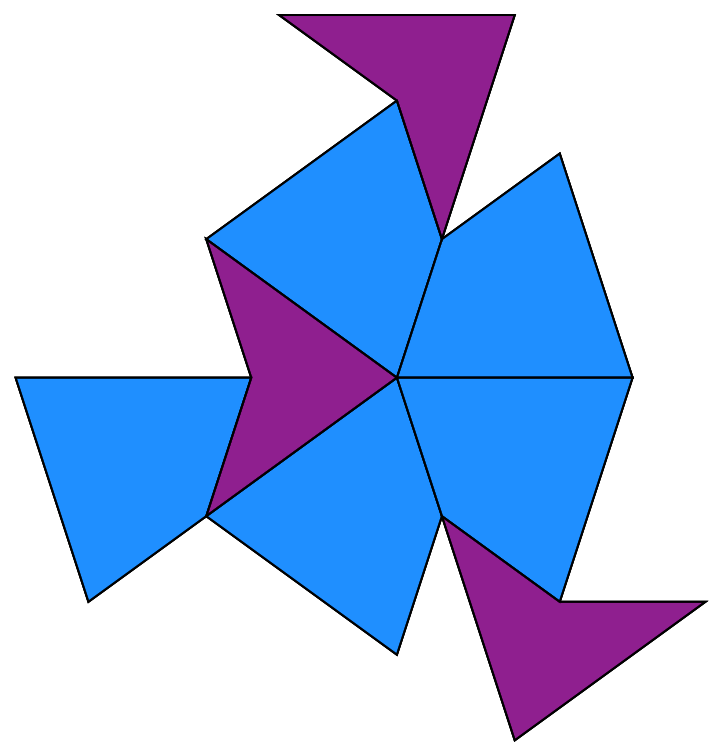 |
With steps=0, the substitution tiling itself is shown, as with the Penrose kites and darts tiling system:
| In[2]:= |
| Out[2]= | 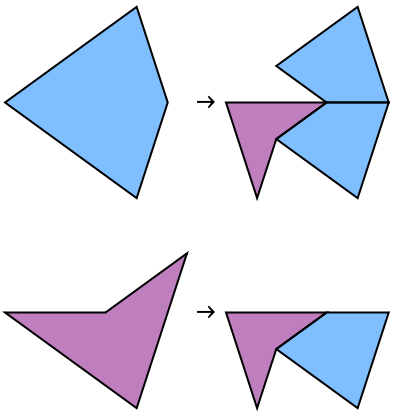 |
Show the pinwheel tiling with an alternate start:
| In[3]:= |
| Out[3]= | 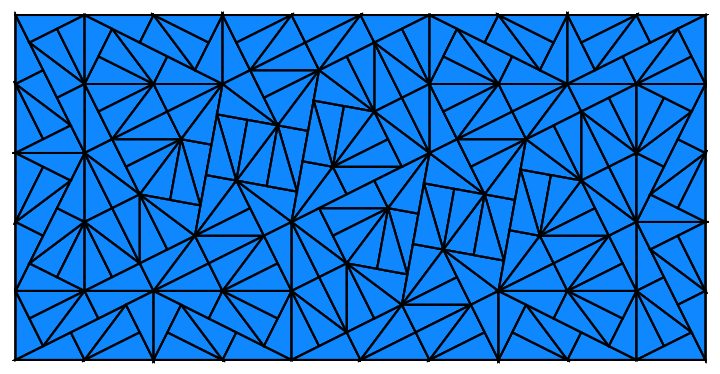 |
Show the numerically approximated second step of all name-supported tilings:
| In[4]:= | ![Column[{Text@#, ResourceFunction["AlgebraicSubstitutionTiling"][#, 2, {"N"}]}, Alignment -> Center] & /@ {"Pinwheel", "Domino", "Tromino", "LTetromino", "PPentomino", "Tritan4", "Drafter3", "Drafter4", "HalfHex", "QuarterHex", "Sphinx", "Limhex", "Tritan3", "Kite", "Equithirds", "TriangleDuo", "AmmannChair", "AmmannPhiChair", "WaltonChair", "AmmannA4", "KitesandDarts", "RobinsonTriangle", "PenroseRhomb", "Binary", "PsiQuad", "RhoQuad", "TwoTriangle", "TribonacciChordQuadrangle", "PsiChordQuadrangle", "RhoChordQuadrangle", "SqrtTwo", "SqrtPhi", "SqrtPsi", "SqrtRho", "SqrtChi", "QuarticPinwheel"}](https://www.wolframcloud.com/obj/resourcesystem/images/939/93930a74-e01f-466c-9fdd-d86a21af501a/685d52d7efd9a858.png) |
| Out[4]= |  |
The Penrose kites and darts tiling system with the root, algebraic points in terms of that root, polygon substitutions and polygon types:
| In[5]:= | ![ResourceFunction["AlgebraicSubstitutionTiling"][{
GoldenRatio,
{{{0, 0}, {0, 0}}, {{1/4, 0}, {7/4, -1}}, {{2, -1}, {0, 0}}, {{1/4, 0}, {-(7/4), 1}}, {{5, -3}, {0, 0}}, {{5/4, -(3/4)}, {47/
4, -(29/4)}}, {{5/4, -(3/4)}, {-(47/4), 29/4}}, {{13/
4, -2}, {-(7/4), 1}}, {{5/2, -(5/4)}, {9/2, -(11/4)}}}, {{1, 2, 3, 4} -> {{2, 3, 5, 6}, {4, 7, 5, 3}, {1, 5, 7, 8}}, {4, 1, 5, 9} -> {{4, 7, 5, 3}, {1, 5, 7, 8}}}, {{1, 1, 2}, {1, 2}}}, 2]](https://www.wolframcloud.com/obj/resourcesystem/images/939/93930a74-e01f-466c-9fdd-d86a21af501a/602623201b838c13.png) |
| Out[5]= | 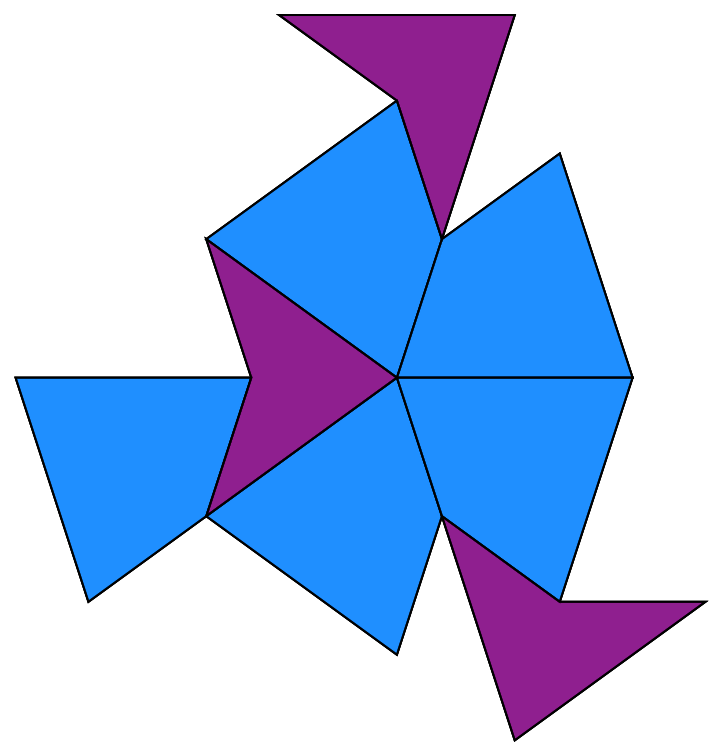 |
A chord tiling with a plastic constant (ρ) root, algebraic points in terms of ρ, polygon substitutions and polygon types:
| In[6]:= | ![ResourceFunction["AlgebraicSubstitutionTiling"][{
Root[-1 - #1 + #1^3 &, 1],
{{{-1, 0, 0}, {-2, -4, -3}}, {{0, 0, 0}, {-2, -4, -3}}, {{1, 2, 1}, {-2, -4, -3}}, {{1, 4, 4}, {-2, -4, -3}}, {{7, 13, 12}, {-2, -4, -3}}, {{13, 22, 17}, {-2, -4, -3}}, {{-(48/49), -(52/49), -(37/49)}, {-(1/49), 3/
49, -(12/49)}}, {{0, 0, 0}, {0, 0, 0}}, {{-(11/49), 33/49, 15/
49}, {11/49, 16/49, -(15/49)}}, {{1, 4, 4}, {0, 1, 0}}, {{208/49,
356/49, 340/49}, {-(12/49), 36/49, 52/49}}, {{13, 22, 17}, {1, 2, 2}}}, {{12, 6, 1, 7} -> {{8, 7, 1, 2}, {3, 2, 8, 9}, {8, 7, 1, 2} + 2, {3, 2, 8, 9} + 2, {8, 7, 1, 2} + 4}}, {{1, 1, 1, 1, 1}}}, 3, {"N"}]](https://www.wolframcloud.com/obj/resourcesystem/images/939/93930a74-e01f-466c-9fdd-d86a21af501a/3d2daae91ceb147a.png) |
| Out[6]= | 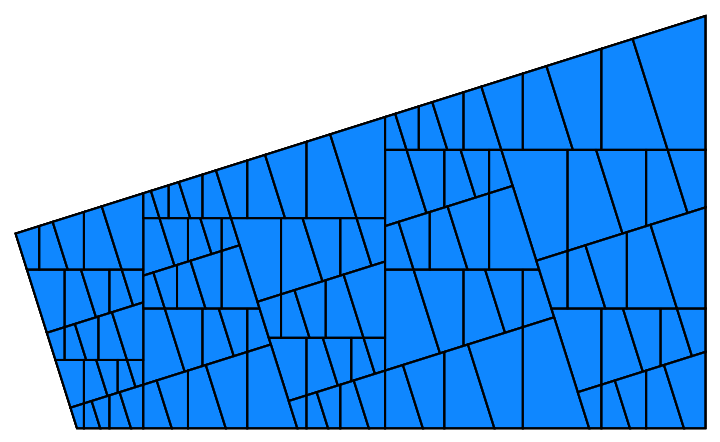 |
Show polygons of every step as a layered graphic:
| In[7]:= | ![Graphics[
MapIndexed[{EdgeForm[{Black, AbsoluteThickness[10/#2[[1]]]}], Opacity[1/#2[[1]]], #1} &, ResourceFunction["AlgebraicSubstitutionTiling"]["QuarterHex", 4, {"N", "Polygons"}]]]](https://www.wolframcloud.com/obj/resourcesystem/images/939/93930a74-e01f-466c-9fdd-d86a21af501a/5b82326e7731ac78.png) |
| Out[7]= | 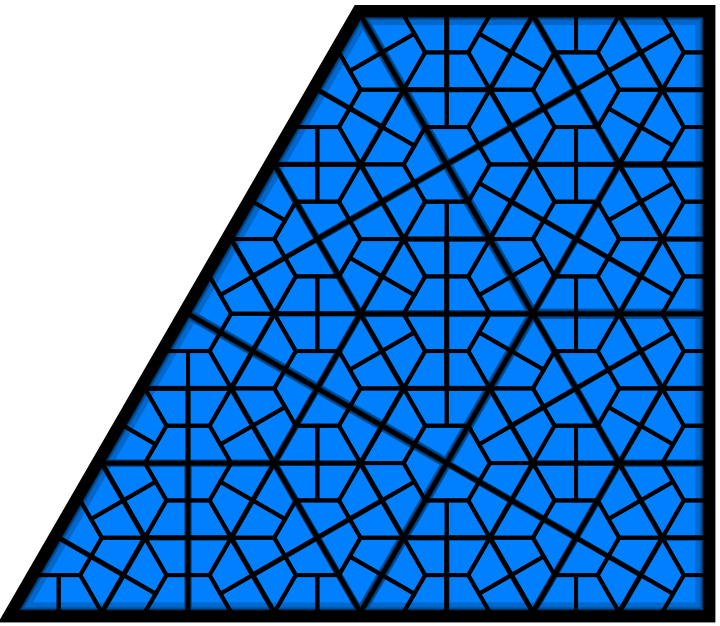 |
The psi-quad substitution tiling is based on the Narayana cow sequence constant, ψ≈1.465571231876768, also called the super-golden ratio, shown here with sixteen levels of substitution:
| In[8]:= |
| Out[8]= | 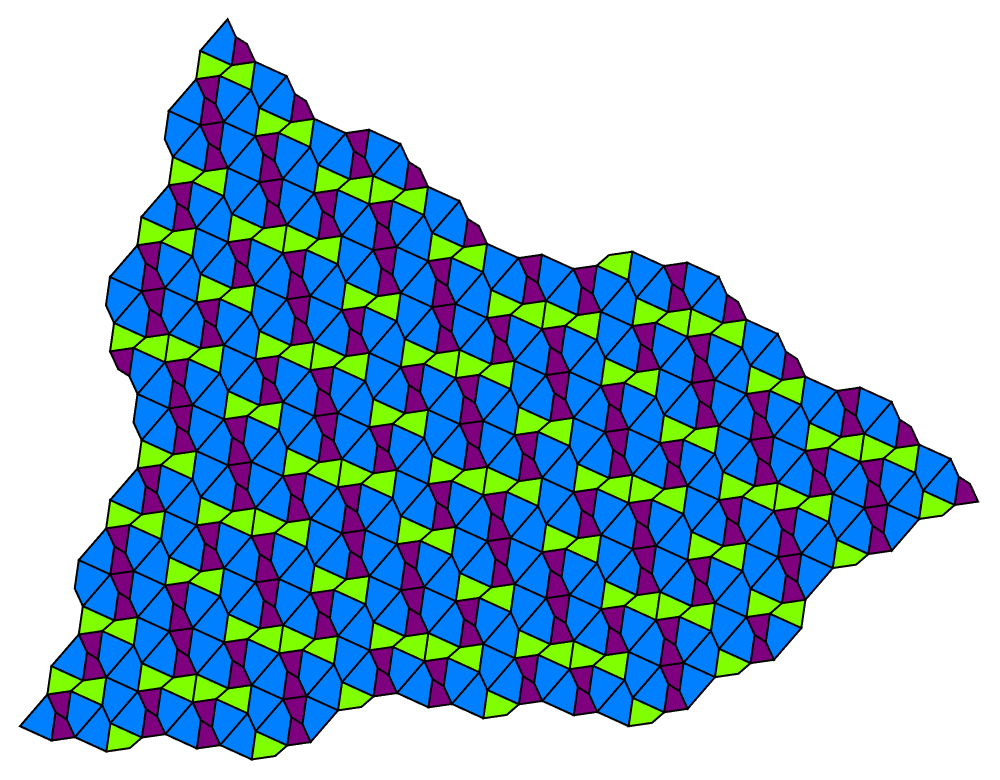 |
The rho-quad substitution tiling is based on the plastic constant, ρ≈1.324717957244746, shown here with thirteen levels of substitution on top of the initial tile:
| In[9]:= | ![Show[Graphics[{EdgeForm[Black], Opacity[.6], #}] & /@ ResourceFunction["AlgebraicSubstitutionTiling"]["RhoQuad", 13, {"N", "Polygons"}][[{1, 13}]]]](https://www.wolframcloud.com/obj/resourcesystem/images/939/93930a74-e01f-466c-9fdd-d86a21af501a/6221096193dc346c.png) |
| Out[9]= | 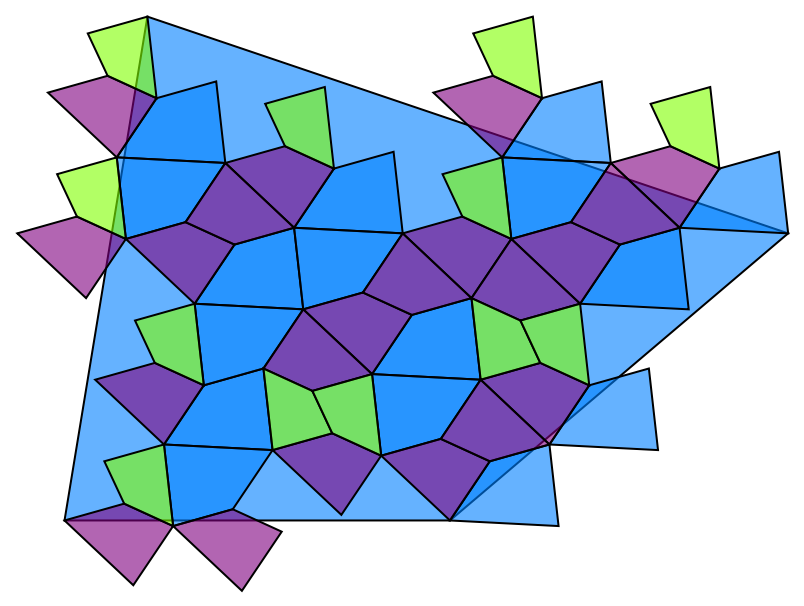 |
Use numeric approximation to show and compare growth with alternate starting positions for the Penrose rhombs and the Godrèche-Lançon binary tiling systems:
| In[10]:= | ![Row[{
ResourceFunction["AlgebraicSubstitutionTiling"]["PenroseRhomb", 4, {"N", "Start" -> (Prepend[{#[[1]], GoldenRatio #[[2]], #[[3]]}, {0, 0}] & /@ Partition[CirclePoints[10], 3, 2, 1]), "ImageSize" -> 350}],
ResourceFunction["AlgebraicSubstitutionTiling"]["Binary", 3, {"N", "Start" -> (Append[{#[[1]], GoldenRatio #[[2]], #[[3]]}, {0, 0}] & /@ Partition[CirclePoints[10], 3, 2, 1]), "ImageSize" -> 350}]}]](https://www.wolframcloud.com/obj/resourcesystem/images/939/93930a74-e01f-466c-9fdd-d86a21af501a/654630b57bb7bde5.png) |
| Out[10]= | 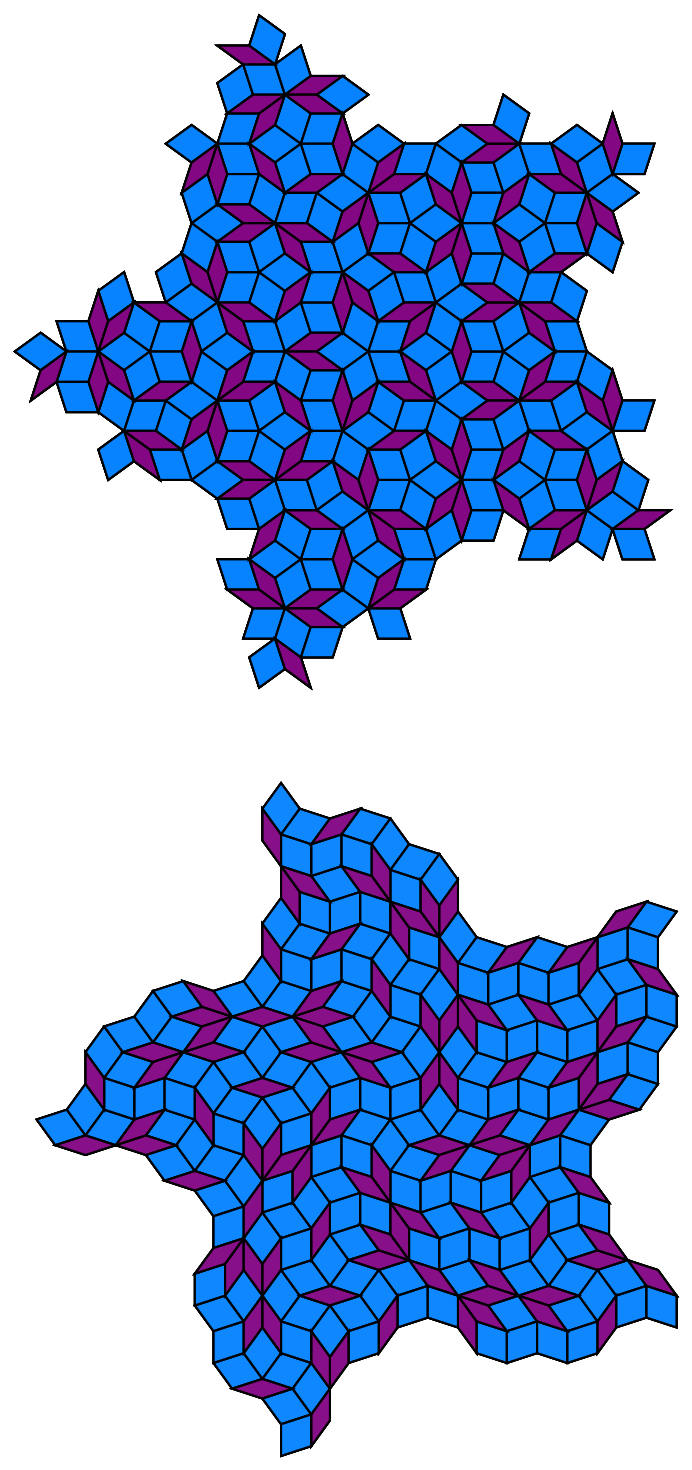 |
Tilings from the blog article Shattering the Plane with Twelve New Substitution Tilings Using 2, φ, ψ, χ, ρ:
| In[11]:= |
| Out[11]= | 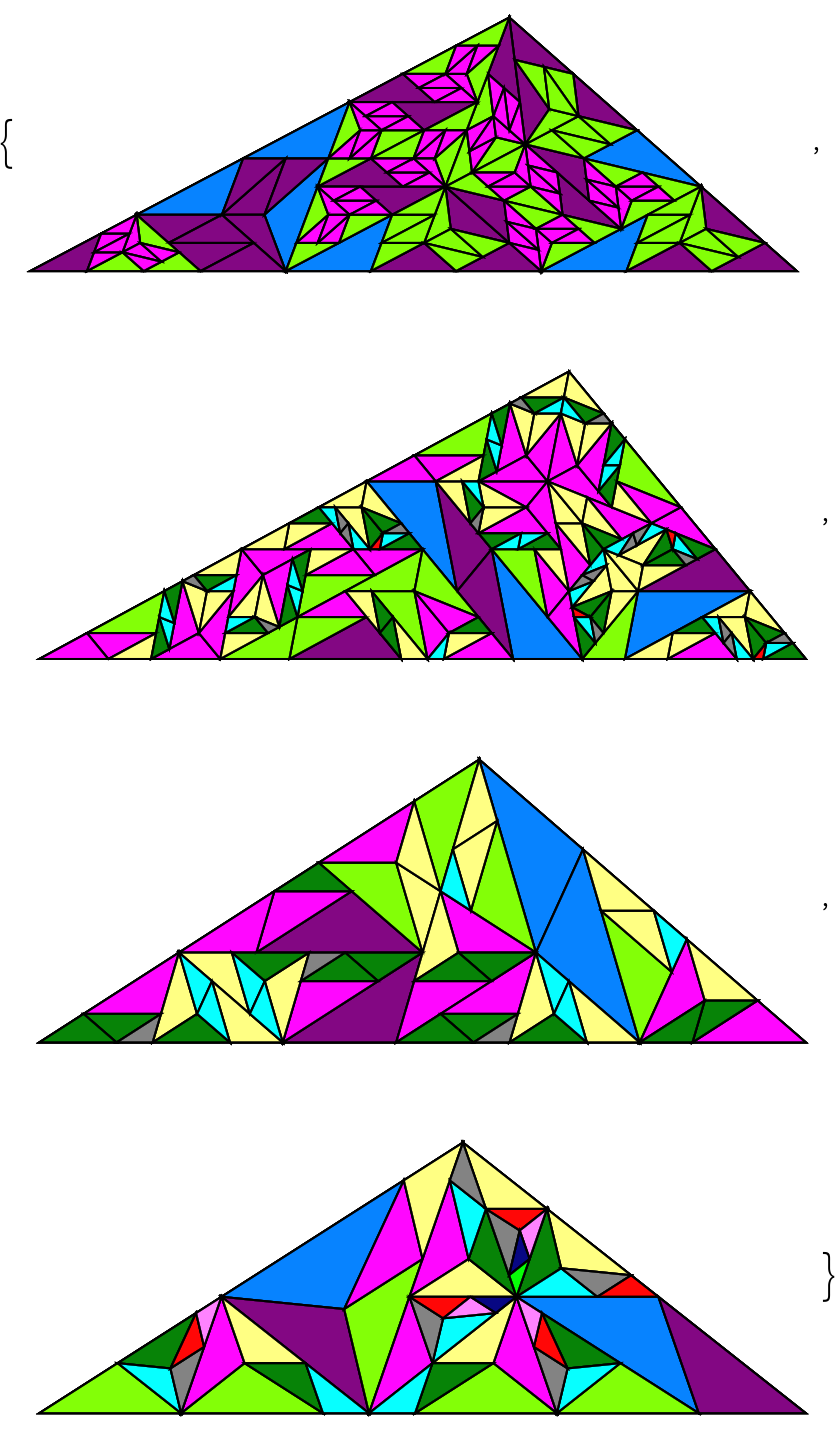 |
One of many variants of a tiling based on a root of χ4-χ-1=0:
| In[12]:= |
| Out[12]= | 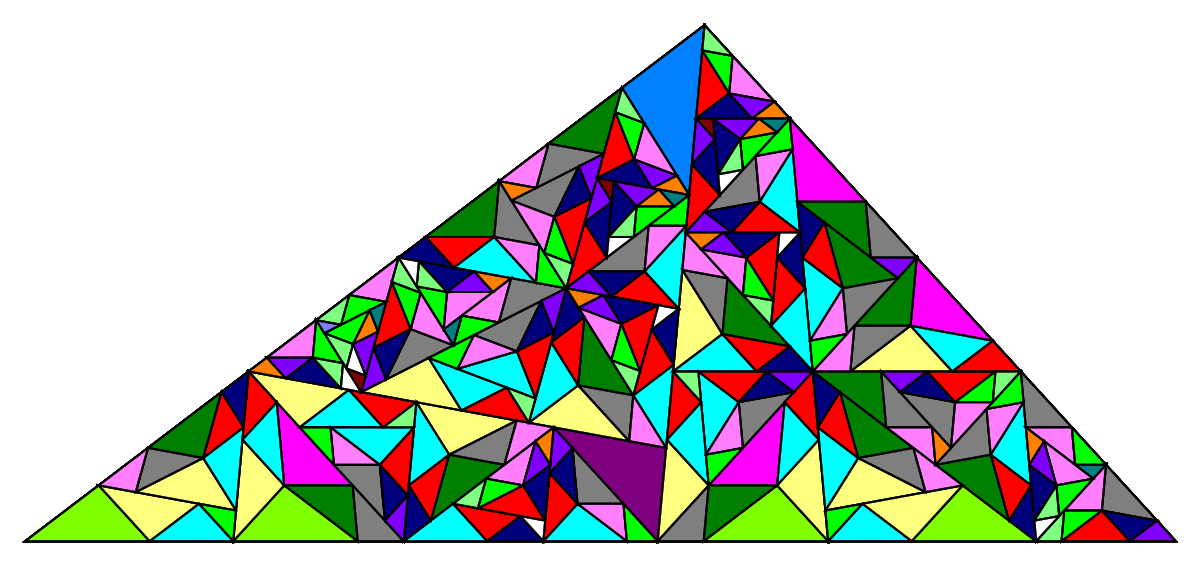 |
Counts of the triangles of different sizes in the above tiling:
| In[13]:= | ![Grid[Transpose[{#[[1]], Length[#[[2]]]} & /@ Last[ResourceFunction["AlgebraicSubstitutionTiling"]["SqrtChi", 9, {"N", "Polygons"}]]]]](https://www.wolframcloud.com/obj/resourcesystem/images/939/93930a74-e01f-466c-9fdd-d86a21af501a/094699b5695b279d.png) |
| Out[13]= |
Wolfram Language 11.3 (March 2018) or above
This work is licensed under a Creative Commons Attribution 4.0 International License